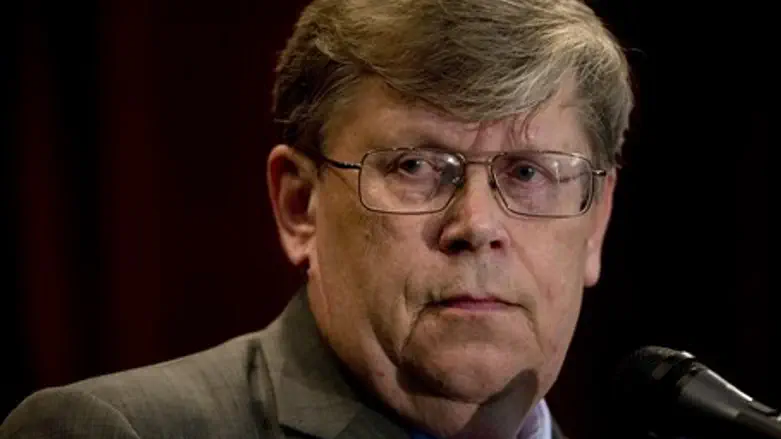
The Iranian regime could have five times more advanced centrifuges capable of producing nuclear weapons-grade uranium than previously thought, according to a report in The Sunday Times.
As world powers prepare for renewed talks with Iran over its nuclear program, and only two weeks before the November 24 deadline to reach a deal, the former deputy head of the International Atomic Energy Association told the paper that while Iran has admitted to possessing 1,008 advanced IR-2m centrifuges, the real number could be as high as 5,000.
Iran "could have up to 4,000 to 5,000 centrifuges or raw materials for them" in locations other than its two major nuclear plants in Natanz and Fordow, where international agencies have focused their attention, said Olli Heinonen.
He said any agreement between the P5+1 powers and Iran should include IAEA access to all other nuclear plants as well, arguing that any other arrangement would "make no sense."
"They have manufactured 1000 IR-2m centrifuges that the IAEA is aware of and the negotiations with the US are going to focus only on the known 1000 IR-2m and 18,000 IR-1 and not the additional centrifuges," he noted. IR-2m centrifuges are five times more powerful than the older IR-1 model.
"There are indications Iran has acquired carbon fibre, the key raw material for the advanced IR-2m centrifuges, to manufacture several thousand. The IAEA has seen 1000 of them in Natanz and the key question is: where are the rest?" asked Heinonen, a senior fellow at Harvard University’s Belfer Centre for Science and International Affairs.
"It is important to have in this verification scheme an agreement that the IAEA can also verify all the centrifuges in Iran and not only those which are in Natanz or Fordow.
"And when I say all, I mean all the things that have been manufactured there — whether it’s in a warehouse, whether it’s in storage, whether it’s installed somewhere else."
"Iran needs to comply and provide the IAEA with the information and access so that the IAEA can do it… if they don’t get this authority then I don’t think it will be a good agreement."
The alarming news comes just two days after an IAEA report said Iran is failing to answer key questions over its nuclear program, further raising suspicions that the entire negotiations process is being used as a smokescreen to by Tehran more time to develop nuclear weapons capabilities.
The International Atomic Energy Agency (IAEA) says Iran is complying with an agreement to curb uranium enrichment, but also notes it has made no progress in its investigation into possible military dimensions of the program.
Despite assurances it is confident of reaching a deal on November 24, Iran, has been toughening its stance in recent weeks. Araqchi recently said he sees no prospect for a deal unless the other side abandons its “illogical excessive demands”.
A senior Iranian official followed those comments by declaring that Iran will demand that all Western sanctions be lifted as part of a final deal, rejecting an American proposal of a gradual lifting of sanctions.
US Secretary of State John Kerry said Wednesday that the negotiations would get more difficult if the November 24 deadline were missed, and the powers were not - for now - weighing any extension to the talks.
